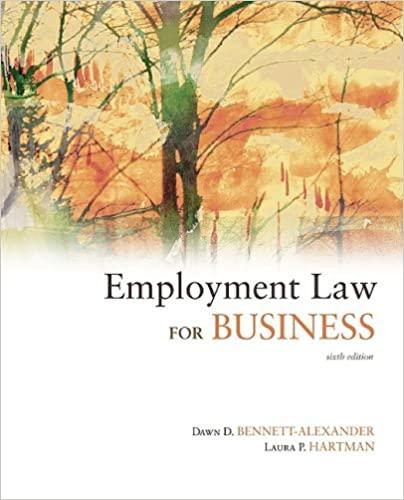Question
n Arizona v. Gant (2009), how did SCOTUS refine the parameters of a search incident to arrest during a lawful traffic stop? SCOTUS ruled that,
n Arizona v. Gant (2009), how did SCOTUS refine the parameters of a search incident to arrest during a lawful traffic stop?
SCOTUS ruled that, because the police had come to rely on a broad interpretation of Belton in order to do its job, the ruling should remain the standard.
SCOTUS ruled that any search of a vehicle without a warrant is unreasonable, regardless of whether the suspect is under arrest or not.
SCOTUS expanded the powers of the police to search a vehicle without a warrant, regardless of circumstances or location of arrestee at the time of the search.
SCOTUS narrowed the interpretation of Belton, allowing police to search a vehicle incident to a recent occupant's arrest only if the arrestee is within reaching distance of the passenger compartment at the time of the search or if the vehicle is thought to contain evidence of the arrest.
Step by Step Solution
There are 3 Steps involved in it
Step: 1

Get Instant Access to Expert-Tailored Solutions
See step-by-step solutions with expert insights and AI powered tools for academic success
Step: 2

Step: 3

Ace Your Homework with AI
Get the answers you need in no time with our AI-driven, step-by-step assistance
Get Started


